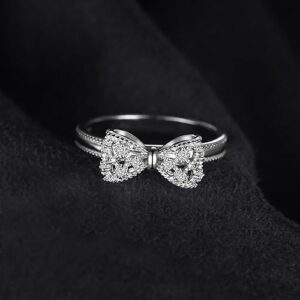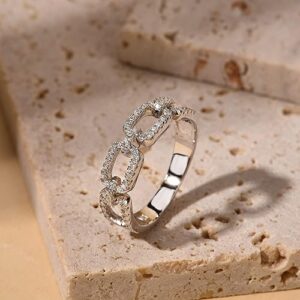If you’ve ever wondered about the difference between silver and sterling silver, or what those mysterious “925” markings mean on your silver jewelry, you’re in the right place. I’ll break down everything you need to know about sterling silver in simple, expert terms.
Whether you’re buying your first piece of sterling silver jewelry or looking to expand your silver jewelry collection, this guide will give you the confidence to make informed decisions about 925 silver, silver care, and authentic sterling silver.
Table of Contents
What is Sterling Silver?
Sterling silver is a silver alloy that combines pure silver with other metals to create the ideal balance of beauty and durability for jewelry making. Unlike pure silver (which is too soft for daily wear jewelry), sterling silver provides the strength needed for silver rings, silver necklaces, and silver bracelets that can withstand regular use.
The internationally recognized formula for sterling silver is:
- 92.5% pure silver
- 7.5% alloy metals (typically copper)
This silver mixture transforms soft, bendable pure silver into something strong enough for contemporary jewelry and artisan jewelry while maintaining that beautiful silver appearance we all love.
According to the Jewelry Information Center, sterling silver has been the standard jewelry metal for over 800 years, proving its enduring value in the jewelry industry.
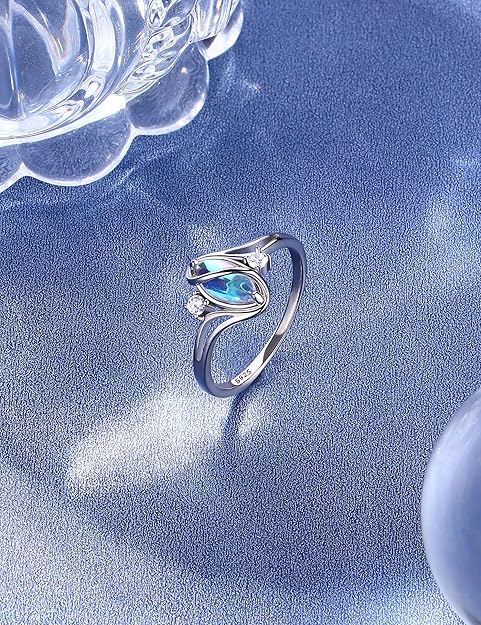
Is Sterling Silver Real Silver?
Yes — sterling silver is real silver! This is one of the most common questions among jewelry lovers, so let’s clear it up. Sterling silver contains 92.5% pure silver and 7.5% alloy metals (usually copper) for strength. That’s nearly 93% genuine silver content.
Just because it’s not 100% pure silver doesn’t make it fake — in fact, the alloy makes it more durable and perfect for everyday jewelry. Think of it like 14k gold: it’s not pure gold, yet it’s still considered real gold. The same principle applies here.
Real Silver vs Fake Silver: Know the Difference
Here’s how to tell authentic sterling silver from materials that actually aren’t real silver:
Genuine Real Silver:
- Sterling Silver (925) – 92.5% pure silver
- Fine Silver (999) – 99.9% pure silver
- Coin Silver (900) – 90% pure silver
Not Real Silver:
- Silver-plated jewelry – Base metal with thin silver coating
- Silver-filled jewelry – Small amount of silver bonded to base metal
- Nickel silver – Contains zero actual silver despite the name
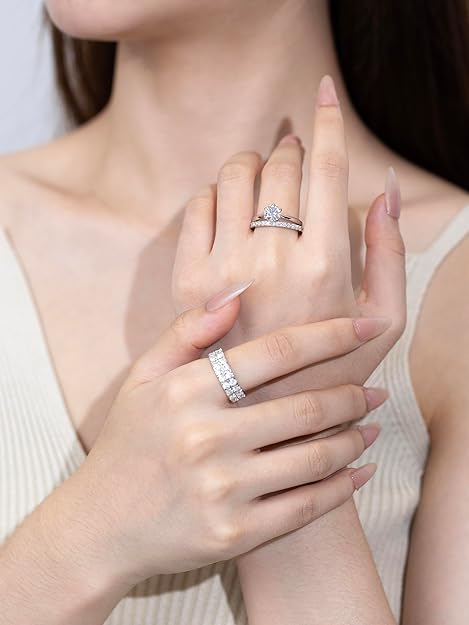
Sterling Silver vs Silver vs Silver-Plated
| Feature | Sterling Silver (925 Silver) | Pure Silver (Fine Silver) | Silver-Plated |
|---|---|---|---|
| Composition | 92.5% pure silver + 7.5% alloy metals (usually copper) | 99.9% pure silver | Thin layer of silver plated over a base metal (e.g., copper, brass, nickel) |
| Hallmark | Marked with “925”, “Sterling”, or “Ster” | Marked with “999” or “Fine Silver” | May have “EP” (Electroplated) or no stamp at all |
| Durability | Strong, less prone to bending or scratching | Softer, bends and scratches easily | Durability depends on base metal; silver layer can wear off |
| Tarnish Resistance | Tarnishes over time but can be cleaned easily | Tarnishes slower than sterling silver | Silver layer tarnishes, and once worn off, cannot be restored easily |
| Weight | Heavier than silver-plated, slightly lighter than pure silver | Heaviest due to high silver content | Usually lighter (depends on base metal) |
| Cost | Affordable compared to pure silver, more expensive than plated | Most expensive of the three | Cheapest option |
| Best For | Everyday jewelry, durability, and beauty balance | Collectors, investment pieces, luxury jewelry | Fashion jewelry, budget-friendly pieces |
| Maintenance | Needs occasional polishing to keep shine | Needs careful handling and polishing | Avoid scratches to maintain plating |
| Hypoallergenic? | Usually hypoallergenic (if no nickel alloy used) | Naturally hypoallergenic | Often not hypoallergenic (may cause skin reactions if nickel base) |
What Does 925 Mean in Sterling Silver?
The “925” marking is your guarantee of authentic sterling silver. This number indicates 925 parts pure silver out of 1000 parts total—exactly 92.5% pure silver content.
Essential Silver Stamps and Authentication Marks:
- 925 silver mark
- Sterling stamp
- Sterling Silver marking
- SS hallmark
- Ster silver mark
These silver hallmarks are like a birth certificate for your quality jewelry. According to the Federal Trade Commission guidelines, reputable jewelers must include these quality assurance marks on legitimate sterling silver jewelry.
Expert Tip: Always look for these marks in inconspicuous places like the inside of ring bands or near clasps on silver necklaces. Their presence confirms silver quality and metal purity.
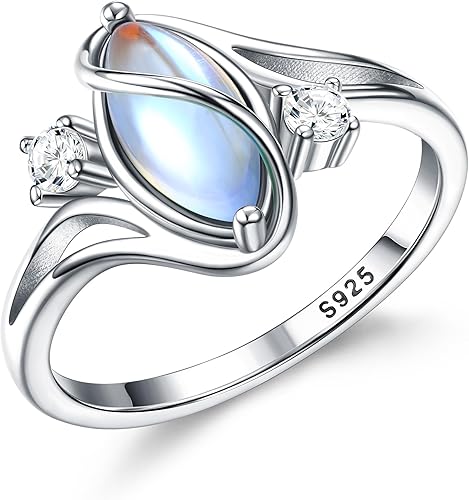
How to Identify Sterling Silver
Knowing how to spot real sterling silver can save you from disappointment and fake silver jewelry purchases:
1. Silver Hallmark Inspection
Look for 925 markings, Sterling hallmarks, or SS stamps. Genuine sterling silver will always display these quality marks prominently.
2. Magnet Test for Silver Authentication
Real sterling silver isn’t magnetic. If a strong magnet attracts your silver jewelry, it’s not authentic sterling silver. However, this test alone isn’t foolproof for jewelry identification.
3. Weight and Color Assessment
Authentic sterling silver has substantial metal weight and a bright, white metallic appearance. Counterfeit silver often feels lighter and may have yellowish tints.
4. Professional Silver Testing
When purchasing expensive pieces, request professional silver testing or visit a certified jeweler. They use acid tests and electronic silver testers for definitive silver purity verification.

Can Sterling Silver Tarnish? Understanding Silver Oxidation
Yes, sterling silver does tarnish—and that’s completely normal for authentic silver jewelry!
Silver tarnishing occurs when the copper content reacts with sulfur in the air, creating silver oxidation and natural patina formation. This process actually proves your jewelry contains real sterling silver.
Factors That Accelerate Silver Tarnish:
- Humidity and moisture exposure
- Perfume and lotion contact
- Body oils from jewelry wearing
- Air pollution and environmental factors
- Improper storage without anti-tarnish protection
Important Note: Silver tarnish doesn’t damage your sterling silver jewelry—it’s completely reversible with proper silver cleaning and jewelry restoration.
Sterling Silver Care and Maintenance Guide
Taking care of sterling silver jewelry isn’t rocket science, but proper silver jewelry care makes a huge difference for your 925 silver accessories and jewelry longevity:
Daily Silver Care Routine:
- Remove sterling silver before swimming, showering, or exercising
- Apply perfume and lotion before putting on silver jewelry
- Wipe down with a silver polishing cloth after wearing
- Store properly to prevent tarnish buildup
Silver Cleaning Methods:
- Use silver cleaning solutions for light tarnish
- Apply silver polish with soft cloths for heavy tarnishing
- Avoid harsh chemicals that damage silver surfaces
- Rinse thoroughly and dry completely after cleaning
Silver Storage for Tarnish Prevention:
- Keep in anti-tarnish pouches or lined jewelry boxes
- Store pieces separately to prevent scratching
- Include anti-tarnish strips in storage areas
- Maintain low humidity environments
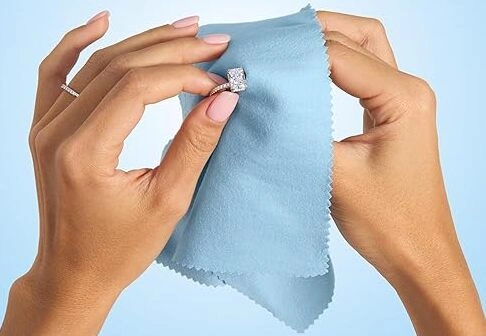
Sterling Silver Buying Guide: Expert Shopping Tips
Follow this jewelry purchasing checklist for smart sterling silver shopping:
Essential Sterling Silver Verification Steps:
- Verify silver hallmarks – Look for 925 stamps or Sterling markings
- Examine jewelry craftsmanship – Check finishes and stone settings
- Test jewelry weight – Real sterling silver has substantial metal weight
- Inspect manufacturing quality – Look for cracks, rough edges, or poor construction
- Confirm return policies – Reputable jewelers stand by their work and offer guarantees.
Pros and Cons of Sterling Silver
Let’s be honest about what you’re getting with sterling silver jewelry and 925 silver accessories:
Sterling Silver Advantages:
- Affordable luxury jewelry with precious metal quality
- Durable jewelry suitable for daily wear
- Hypoallergenic jewelry for sensitive skin
- Timeless jewelry appeal that never goes out of style
- Widely available from online silver stores to local jewelers
- Versatile silver accessories for any occasion
Sterling Silver Considerations:
- Requires regular jewelry maintenance and silver cleaning
- Silver tarnishing develops over time (easily reversible)
- Can scratch more than harder metals
- Precious metal prices fluctuate with market conditions
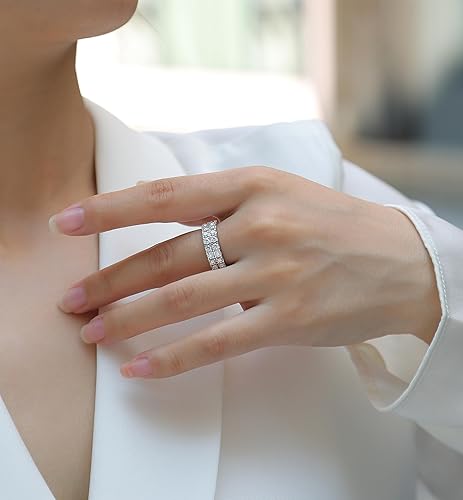
Frequently Asked Questions
Yes — sterling silver is considered good quality because it’s made of 92.5% pure silver mixed with 7.5% alloy metals (usually copper) to improve strength and durability.
Pure silver is too soft for daily wear, but sterling silver strikes the perfect balance between beauty, strength, and affordability. It’s also hypoallergenic for most people, making it safe for sensitive skin, and with proper care, it can last for decades — even generations.
In short: Sterling silver = a high-quality, precious metal jewelry choice that offers luxury without the price tag of gold or platinum.
With proper care, sterling silver jewelry can last a lifetime and even become an heirloom. Regular cleaning, avoiding harsh chemicals, and storing it properly help maintain its shine and prevent tarnish.
Sterling silver is not considered a major financial investment like gold or platinum, but it’s a valuable choice for quality jewelry at an affordable price. It offers durability, timeless style, and resale value, but its market price is more stable than high-profit metals.
It’s not recommended to shower with sterling silver jewelry. Water, soap, and shampoo can speed up tarnishing and leave a dull film. Occasional accidental exposure is fine, but regular contact with moisture will reduce its shine.
Prices vary based on silver’s market rate, design complexity, craftsmanship, brand reputation, and whether the piece includes gemstones or plating. Handmade or designer sterling silver will cost more than mass-produced items.
Yes — sterling silver can be resized, soldered, and repaired by a skilled jeweler. Its malleability allows for adjustments, replacing clasps, fixing chains, and resizing rings without losing integrity.
Conclusion: Your Complete Sterling Silver Investment Guide
Sterling silver jewelry offers the perfect balance of beauty, durability, and affordability in precious metal jewelry. Whether you’re treating yourself to your first sterling silver piece or expanding an existing jewelry collection, understanding silver quality makes all the difference in choosing the right pieces.
Remember, sterling silver isn’t just fashion jewelry—it’s an investment in pieces that can last a lifetime with proper jewelry care and silver maintenance. The “925” stamp is your guarantee of silver quality, and regular jewelry maintenance keeps your silver accessories stunning for years.
Armed with this expert knowledge about silver purity, jewelry authentication, silver care, and smart jewelry shopping, you can shop confidently for sterling silver rings, silver necklaces, silver bracelets, and silver earrings. You’re investing in timeless jewelry that combines affordability with precious metal quality.
Your sterling silver collection awaits—choose pieces that reflect your style while ensuring authentic sterling silver quality that will treasure for years to come.

